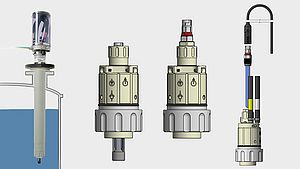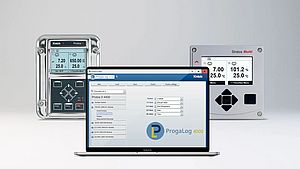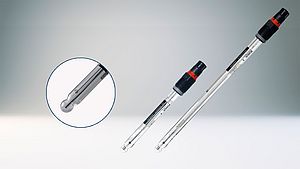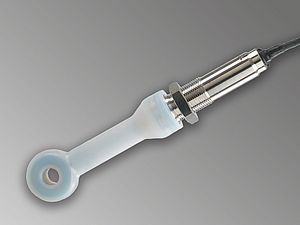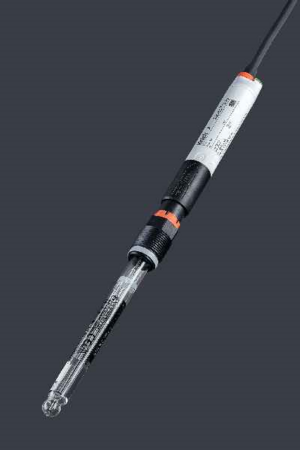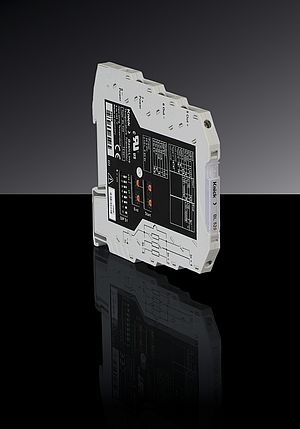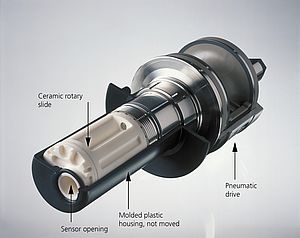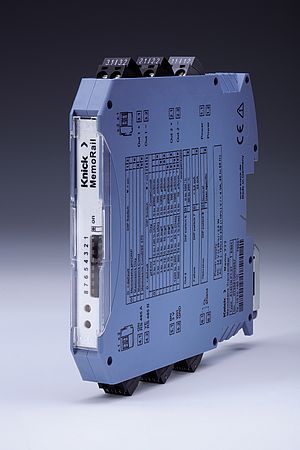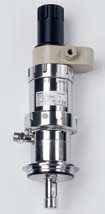Waste gases from industrial combustion plants do not just smell bad they can be harmful to health and environment. A pH measuring system for desulfurization plants helps to keep them in check.
The after-treatment of polluted flue gases has been required by law only for a few decades. Since then, companies have invested in flue gas cleaning technology on a grand scale. In Germany, for example, sulfur dioxide emissions from large combustion plants have decreased by more than 90 %. The most widely used technology to reduce sulfur dioxide emissions is so-called flue gas scrubbing. Gas scrubbers handle both extremely acidic and extremely basic substances. To ensure their optimal operation, the pH value must be monitored precisely. For that purpose, pH measuring systems are installed in various places throughout the process. Extreme pH values and deposits put great stress on the measuring points, which must be cleaned regularly and thoroughly. Previously, measurement could not be automated for lack of capable fittings – metal ball valves or retractable probes corrode and their movable parts jam due to extreme encrustations, and plastic valves are unsuitable for applications with extreme mechanical and thermal stress.
A wide range of methods
Polluted flue gases are unwanted by-products of a number of processes such as the burning of fossil fuels in power plants and of domestic and industrial waste in incinerators. They are also emitted in various chemical process engineering applications. In all these industries, a series of autonomous, layered cleaning procedures are employed at various process stages. A wide range of technologies can be used to remove dust and gaseous pollutants such as burnt gases and volatile hydrocarbons from flue gas and other process waste gases. Electric filters, baghouse filters, wet scrubbers, and cyclone filters can be used for dust separation. Gaseous pollutants are treated according to their physical and chemical properties. Hydrocarbons can be removed by condensation, activated carbon filtering, organic flue gas treatment, membrane treatment, or catalytic or thermal post-combustion. Catalytic or thermal reduction converts nitrogen oxides into their harmless components. Gas scrubbers are employed to precipitate water-soluble pollutants such as sulfur oxides; this treatment is often followed by a (bio-) chemical treatment of the polluted wash water.
Leaching out sulfur with an efficiency > 95 %
Sulfur oxides are a product of fossil fuel burning in particular. The sulfur contained in fuels interacts with atmospheric oxygen to form sulfur dioxide and, to a lesser extent, sulfur trioxide. Sulfur oxides are so-called acidifiers whose inhalation can cause lung irritation and diseases, and which contribute to winter smog and acid rain. With a separation efficiency exceeding 95 %, wet scrubbing is the most effective desulfurization method and the preferred method in Germany. An alkaline solution, usually limewash, is employed to absorb sulfur dioxides. While the flue gases are routed upwards through the absorber tower, the so-called scrubber, lime dissolved in water is sprayed into the scrubber from above. The limewash absorbs the major part of the sulfur dioxides; the reaction generates an alkaline solution which is processed into gypsum for the use in the construction industry. The cleaned flue gases are emitted into the atmosphere.
Measuring and process engineering challenges
Flue gas scrubbing generally combines two consecutive washing cycles and (bio-)chemical waste water treatment. PH values are monitored at three measuring points. Process conditions in a gas scrubber pose extreme challenges for the pH measuring points: the process medium contains 2-15 % solids, the slurry process material is corrosive and abrasive, and the alkaline wash solution supports the accumulation of deposits, congestions, and encrustations. In the pre-scrubber stage, hydrogen chloride, hydrogen fluoride, and heavy metals are precipitated. For that purpose, and to ensure that sulfur dioxide is not yet bound, the hot flue gases are cooled by injecting limewash. Thus, monitored by the measurement chain, the pH value is increased only slightly to a value between 1 and 2.
The second measuring point is typically set up in the backflow circulation line to control the effectiveness of the second washing cycle. It monitors the calcium sulfite / gypsum slurry. In the main scrubber, more lime is added to further increase the pH value to a value between 5.5 and 6.0, at which level sulfur dioxide is bound most effectively. At this stage, continual pH measurement is required for monitoring and controlling the dosage of the limewash in order to minimize material input and costs.
The third measuring point monitors the highly alkaline waste water, which remains after gypsum has been separated and concentrated. It is neutralized by adding sulfuric acid which binds excess lime.The pH sensor must be often cleaned from deposits. The aggressive wash solution shortens the operating time of the electrodes. An automated solution is thus very desirable for this application.
Systematic solution
The combination of the Ceramat WA 150 sensor lock-gate and the automatic Unical 9000 cleaning and calibration system allows for a fully automated solution of this demanding measuring task. If required, the system can be easily integrated into a Profibus PA network. It features a service switch which allows users to access the current sensor position at any moment. As the process media are routed in separate channels, the calibration solutions are utilized very economically and pollution of the media is reliably prevented. The system thus provides increased safety while requiring very little maintenance.
The Ceramat WA 150 regularly and automatically cleans and calibrates the sensor. Since this is a high-inertia process, the sensor can remain in the calibration chamber for long periods and needs to be inserted into the process medium only for short intervals (e.g. for ten seconds per minute); this helps protect the sensor and extends its operating life. The sensor is suited for harsh environments and easy to maintain: the pneumatic drive can be exchanged during operation and all relevant gaskets and the calibration chamber can be accessed without special tools.
The electro-pneumatic Unical 9000 system not only controls the drives, which lower and raise the sensors, and the pumps for calibration and cleaning solutions, but also monitors the reserves of those solutions and sets off an alarm if the system requires maintenance. Since the electrodes are calibrated automatically in pre-set or user-specific program sequences, maintenance requirements are greatly reduced. The control system is programmed via the Protos analyzer which also supplies it with auxiliary power.
All process data are displayed on the monitor of the Protos 3400 analyzer. Featuring three module slots, the unit allows users to integrate various measuring functions and extras. In this application, it processes data from two pH measuring points centrally. Up to five sets of parameters can be saved on a SmartMedia card. A Profibus interface allows for digital connection to the control system. A network diagram indicates all crucial sensor parameters such as slope, zero, reference impedance, and glass impedance at a glance.
This system solution offers high availability, optimal process control, and minimal operating costs. Consisting of the Protos 3400 process analyzer, the electro-pneumatic Unical 9000 control, and the Ceramat WA 150 sensor lock-gate, it automatically monitors pH values. The solution is suitable for a wide range of applications in the chemical, pharmaceutical, and food industries. Some applications can be automated for the first time thanks to the system’s measuring precision, operating reliability, insensitivity to dirt, and suitability for hazardous media. At the same time, the system provides increased process safety. Users further benefit from decreased operating costs thanks to the high availability and the low maintenance requirements.
ph Measuring System for Flue Gas Cleaning Applications
Waste gases from industrial combustion plants do not just smell bad they can be harmful to health and environment.
- by Knick Elektronische Messgeräte
- October 1, 2009
- 453 views








